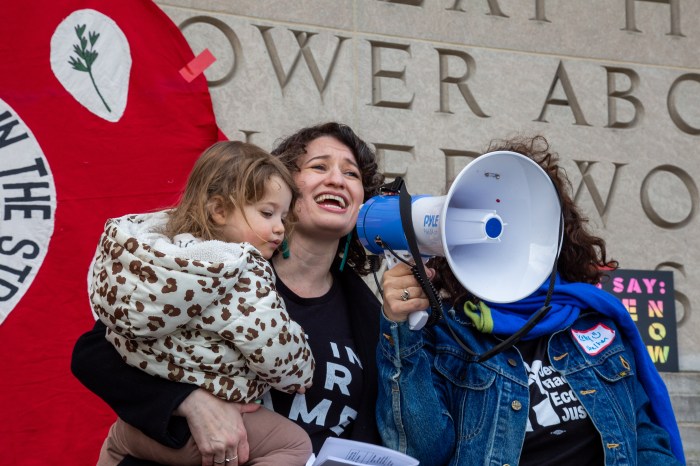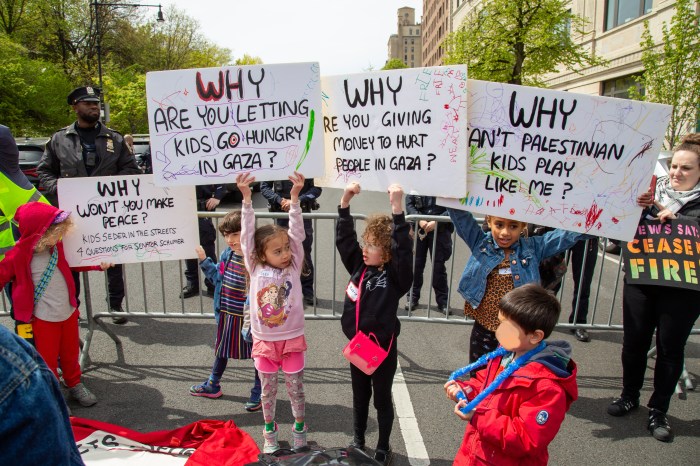Click here to read the full article in Brooklyn Paper
By Jada Camille
Youngsters joined social advocacy nonprofit Jews For Racial and Economic Justice in calling for a ceasefire in Gaza during a kid-friendly Passover “Seder in the Streets” and “Tot Shabbat” held Saturday, April 27.
The event aimed to bring children into conversations surrounding war, military occupations and ceasefires in a way they could understand, organizers told Brooklyn Paper. Activities included a Shabbat ceremony, singing, sign-making, learning supportive chants, and a seder meal.

In an effort to put action behind their words, organizers also led a march — with the children in tow — to Senate Majority Leader Chuck Schumer’s Brooklyn home to demand he support a permanent ceasefire.
Rebecca Katz, a parent and JFREJ member who helped organize the seder, brought her children to the event because, though they are young, she said it’s never too early to introduce elements of community and solidarity to kids — especially as it relates to their faith.
“Doing action with kids means you need to be very intentional and thoughtful with every step,” she told Brooklyn Paper. “We put a lot of thought into what we’d do, how long everything would take, [and] making sure it’s engaging.”
Instead of excluding kids from the big conversations, both events — the seder and the shabbat — included applicable lessons for all ages.
Tabitha St. Bernard-Jacobs, a New Jersey mom who attended with her family, said she brought her kids because of the significant advocacy for peace.
“It’s really important to my partner and I to teach our children that Judaism involves social justice,” St. Bernard-Jacobs said. “It involves taking stances that support safety for everybody.”

She said her nine-year-old son has since asked more questions on the conflict, and if there have been updates on a ceasefire.
“Just having him be around people who are also advocating for a ceasefire and not just speaking about it, but taking action,” she said. “It’s really important for us to model to our children what it looks like to be a part of a community.”